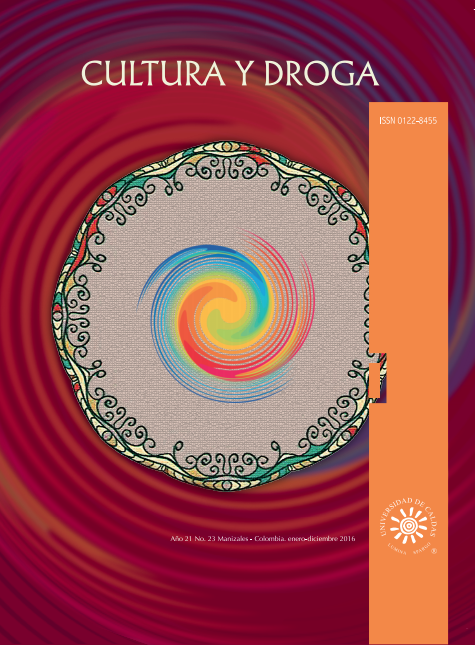Authors
Abstract
Objective. To understand the sacred as a phenomenon to provide a basis for the entheogenic hypothesis. Methodology. Based on Mircea Eliade’s on-phenomenological hermeneutics, the sacred will be understood as a phenomenon and the entheogenic as a hierophany or manifestation of the sacred. This is based on understanding phenomenological concepts from thinkers such as Heidegger, Zubiri, Otto, Schleiermacher, Ricoeur. Results. For Eliade the sacred is reality and man accesses the sacred through a deep awareness of reality. While the entheogene may be an access to the sacred, it must be said that the sacred is a phenomenon irreducible to another phenomenon, therefore the sacred is irreducible to the entheogene. Conclusions. The sacred has no relation to the hallucination, so that to understand the entheogene as an access to the sacred, it is necessary to demystify that the entheogene is ‘hallucinogenic’. The entheogene is a manifestation of the sacred, because through an extraordinary experience, a deep consciousness of reality can be accessed.
References
Eliade, M. (1969). Mefistófeles y el Andrógino. Madrid, España: Guadarrama.
Eliade, M. (1974). Tratado de historia de las religiones. Madrid, España: Ediciones Cristiandad.
Eliade, M. (1976). El chamanismo y las técnicas arcaicas del éxtasis. Ciudad de México, México: Fondo de Cultura Económica.
Eliade, M. (1980). La prueba del laberinto. Madrid, España: Ediciones Cristiandad.
Eliade, M. (1991). Mito y realidad. Barcelona, España: Editorial Labor.
Eliade, M. (1999). Historia de las creencias y de las ideas religiosas. Barcelona, España: Paidós.
Eliade, M. (2001). El mito del eterno retorno. Buenos Aires, Argentina: Emecé.
Encabo, H. (2008). Alucinaciones. Archivos de Neurobiología, Neurocirugía y Neuropsiquiatria, 4 (2), 22-29.
Heidegger, M. (1971). Ser y Tiempo. Ciudad de México, México: Fondo de Cultura Económica.
Heidegger, M. (2006). Introducción a la fenomenología de la religión. Ciudad de México, México: Fondo de Cultura Económica.
Marcel, G. (1987). Aproximación al misterio del Ser: Posición y aproximaciones concretas al misterio ontológico. Madrid, España: Ediciones Encuentro.
Otto, R. (1991). Lo santo. Lo racional y lo irracional en la idea de Dios. Madrid, España: Alianza Editorial.
Ricoeur, P. (2006). Teoría de la interpretación. Ciudad México, México: Siglo XXI editores.
Schleiermacher, F. (1990). Sobre la religión. Madrid, España: Tecnos.
Wasson, R.G. (1980). El camino a Eleusis: una solución al enigma de los misterios. Ciudad de México, México: Fondo de Cultura Económica.
Zubiri, X. (2001). Sobre la realidad. Madrid, España: Fundación Xavier Zubiri.

 PDF (Español)
PDF (Español)
 FLIP
FLIP

















